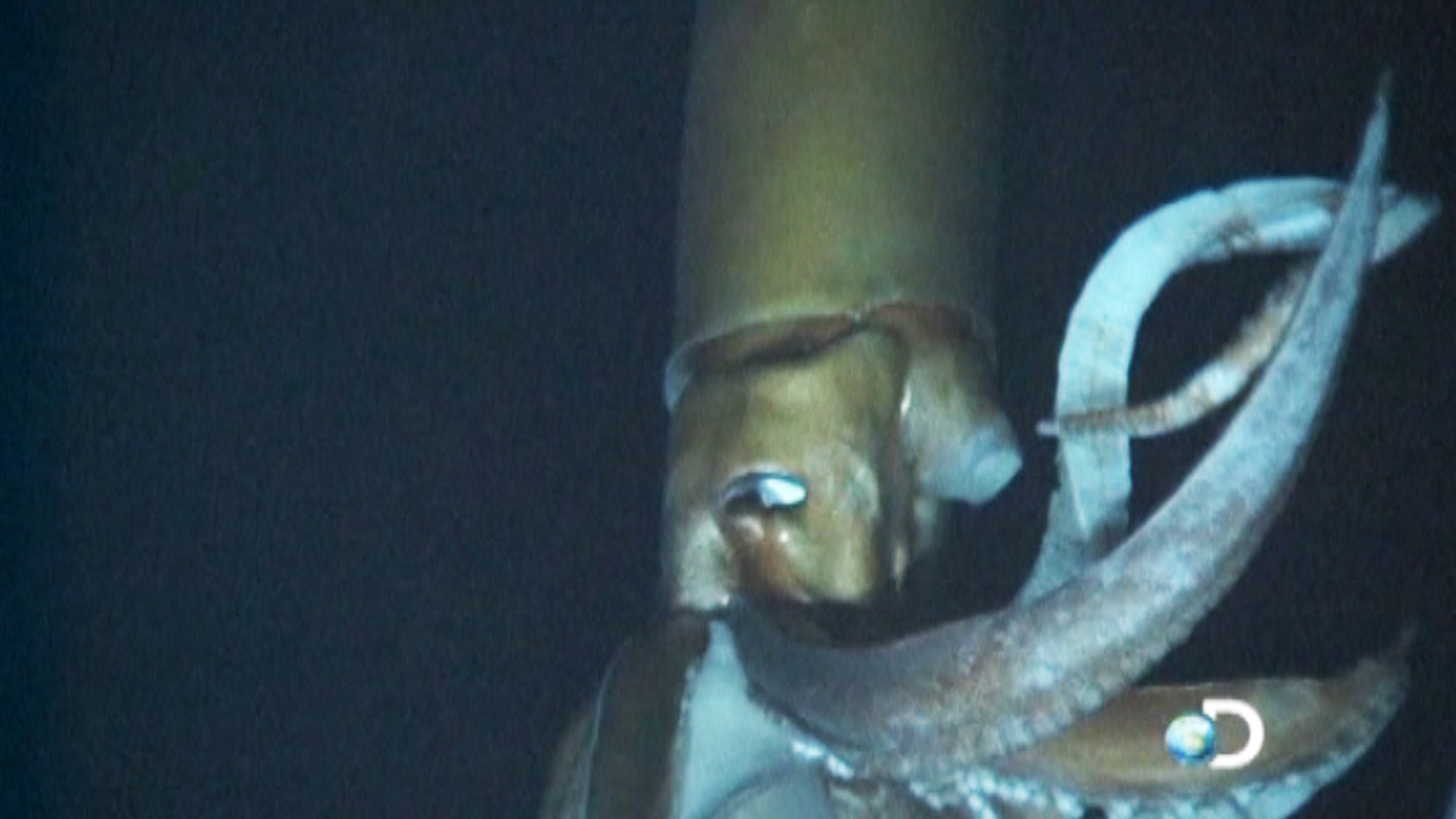
Once the colossal squid was thawed, it had to be stored in a liquid preservative to stop the tissues rotting.

Preserving the colossal squid Stopping the rot To avoid damaging it, they decided not to try to turn it over.Īt last, with the thawed specimen laid out in the tank, the scientists could finally start to examine the colossal squid in detail. The team quickly realised that the squid's tissue was gelatinous and delicate. It was now lying with most of its body upside down in the tank, with the ventral surface, or underside, showing. When the arms and tentacles were unfurled, bubblewrap and floating bags were used to hold them up in the tank to stop them getting damaged.Įventually, after 60 hours, the specimen had thawed out. As the specimen started to thaw, the landing net and the blue plastic lining it had been frozen in were carefully cut away. Used running water to speed up the thawing process. Although the outer edges of the 'squidcicle' thawed relatively quickly, the central core remained frozen. The scientists put on waders and gumboots so they could climb into the tank to examine the specimen. The colossal squid was carefully hoisted up and then lowered into the tank (video 1). The steel frame and plastic container surrounding the specimen was cut away. Once the tank was ready, the 495-kilogramme squid was finally removed from the freezer. A tonne of crushed ice sourced from a local fishing company was shovelled into the tank to bring the water temperature down. The temperature of the water in the tank had to be kept down so the squid wouldn't thaw too quickly. The colossal squid in its six metre-long temporary tank, built using plywood panels lined with several layers of polythene, 2008. Corporate partnerships Hononga kaipakihi.Friends of Te Papa: Our membership programme Ngā Hoa o Te Papa: Te hōtaka mema.Media sales and licensing Te hohoko papāho me te manatā.Past exhibitions Ngā whakaaturanga o mua.Touring exhibitions Ngā whakaaturanga poi haere.Guides to caring for objects Tiaki Kohinga, Tiaki Taonga.For museums and galleries Mō ngā muhiama me ngā whare toi.Read, watch, play Kōrero, mātaki, purei.For a complete listing of our warranty, please see our website at Discover the collections Tūhuratia ngā kohinga
SQUIDS FLUID FULL
Squid Ink will replace or provide full credit for products which we supply that are defective and returned by the customer.
SQUIDS FLUID FREE
Squid Ink guarantees that all fluids will be free of defects and will not cause damage to ink jet printers when used under conditions for which the product was manufactured. Squid Ink stands by the product line with a comprehensive warranty.


No flushing is needed with Squid Ink – simply replace the ink container and continue printing. These products include ½ liter and 1 quart bottles, and 5 gallon pails for Videojet®, 1 quart bottles for Imaje®, and ½ liter bottles for Linx®.

We also package these fluids in 100% compatible containers, eliminating adaptors, fittings, or add-on units. Squid Ink manufactures quality replacement inks for the most common CIJ systems in the marketplace. Plug and Print With 100% Compatible Containers Our replacement fluids are formulated to meet or exceed the specifications and performance of OEM products. Our CIJ fluids are fully compatible with the formulations used in CIJ printers manufactured by Videojet®, Imaje®, Hitachi®, Linx® and others. Our replacement fluids include formulations for the most common printing systems, and are packaged in 100% compatible, direct replacement containers Lower Downtime and Maintenance CostsĪs an innovative leader in the industry, Squid Ink has been instrumental in formulating inks for the industry’s most popular technologies. In fact, Squid Ink offers one of the most complete line of CIJ replacement fluids in the industry today. Squid Ink manufactures superior quality CIJ fluids designed for a wide variety of CIJ printing systems.


 0 kommentar(er)
0 kommentar(er)
